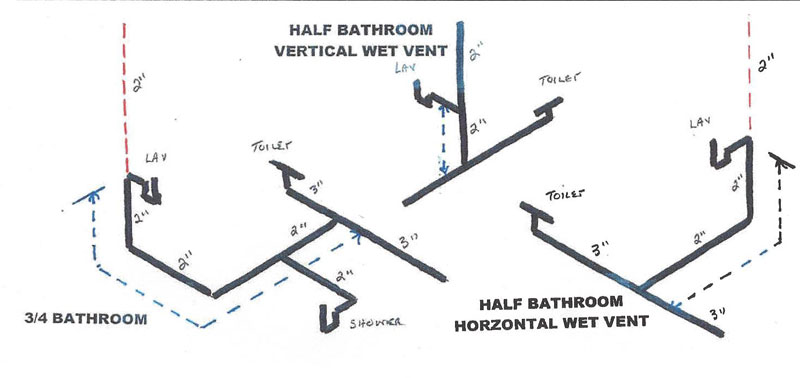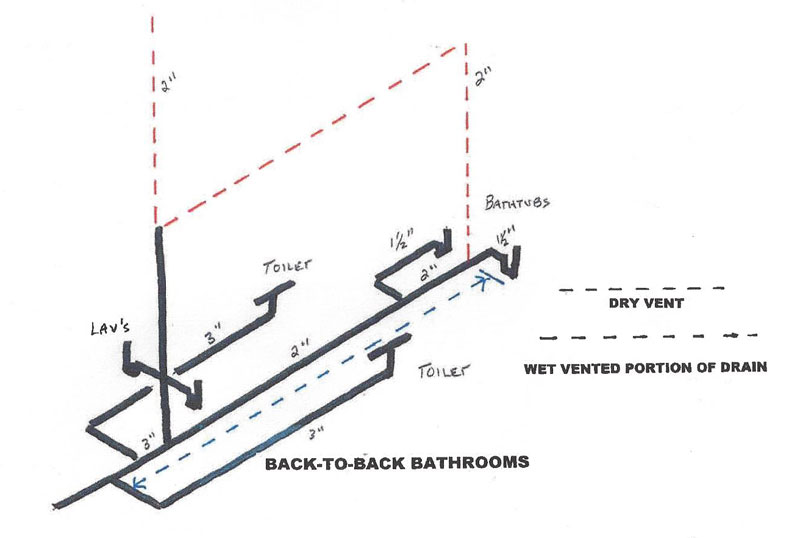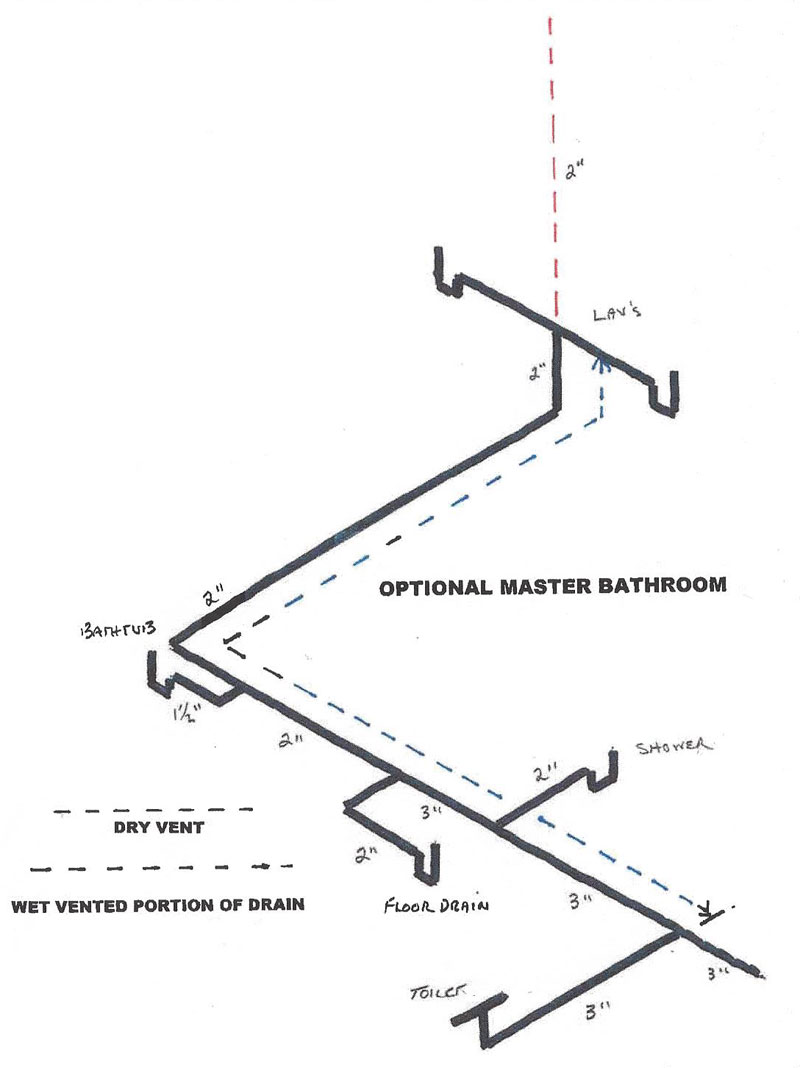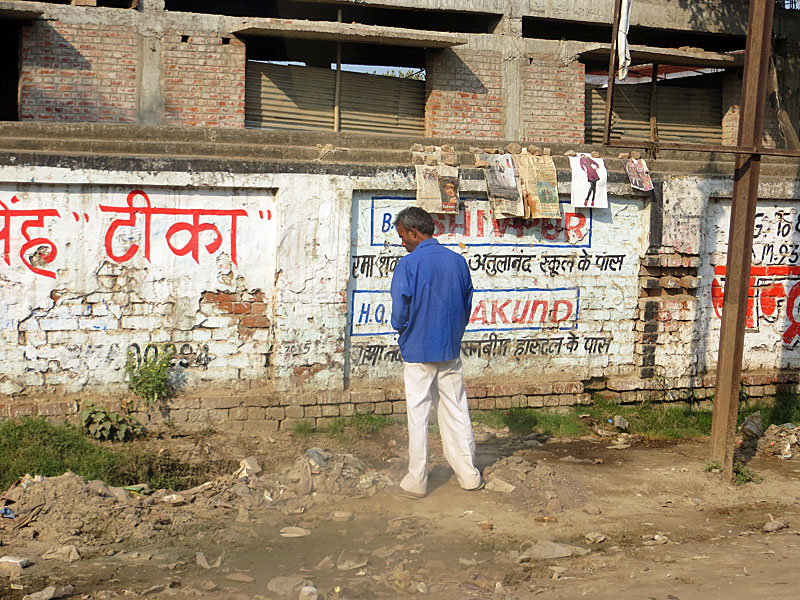BackwardsPTrap
New Member
One thing I'm having a hard time finding information on is how to properly connect fixture drains to a wet vent. So many diagrams I see in books and online show a wet vent setup where fixture trap arms dump into the wet vent at a downward 45° angle. This doesn't make any sense to me. Isn't this creating a siphon by dumping downwards before the trap arm is vented? See the following two examples:
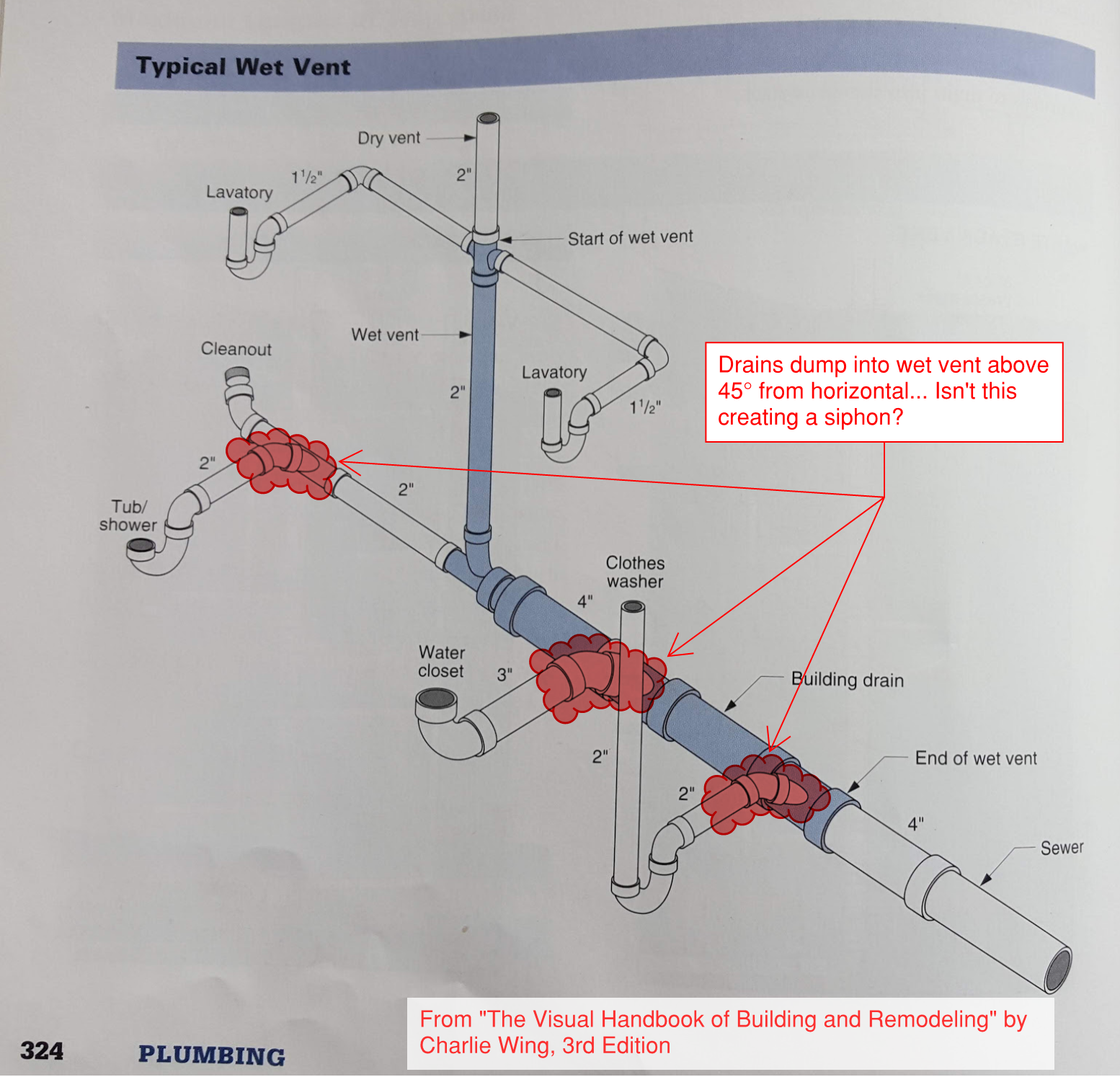
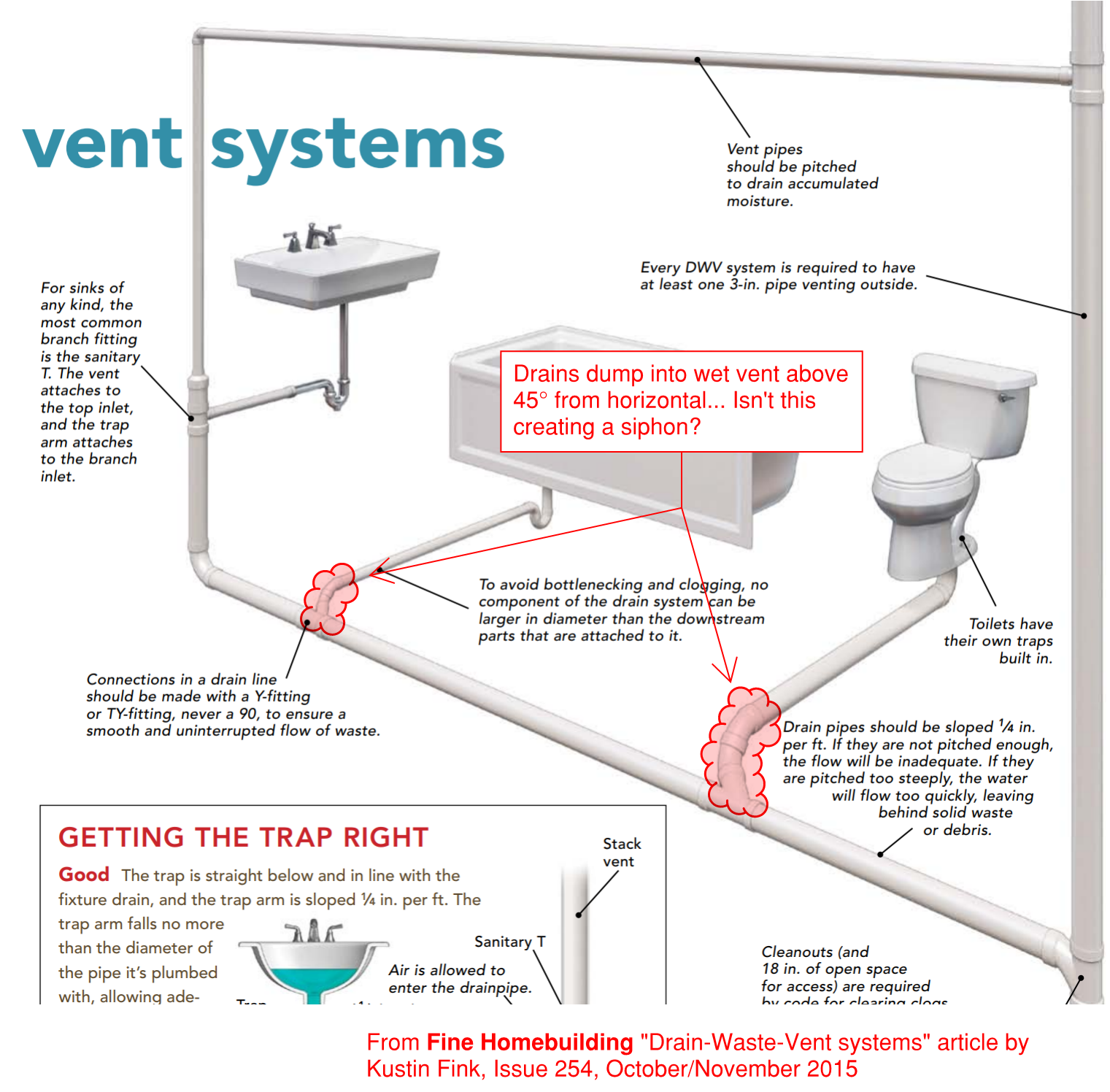
How can you downturn any trap arm before it being vented, without creating a siphon condition? In both of these examples, the pipe drops below the weir before being accessible to the vent air. Here is a side view example of the condition shown in the images above.
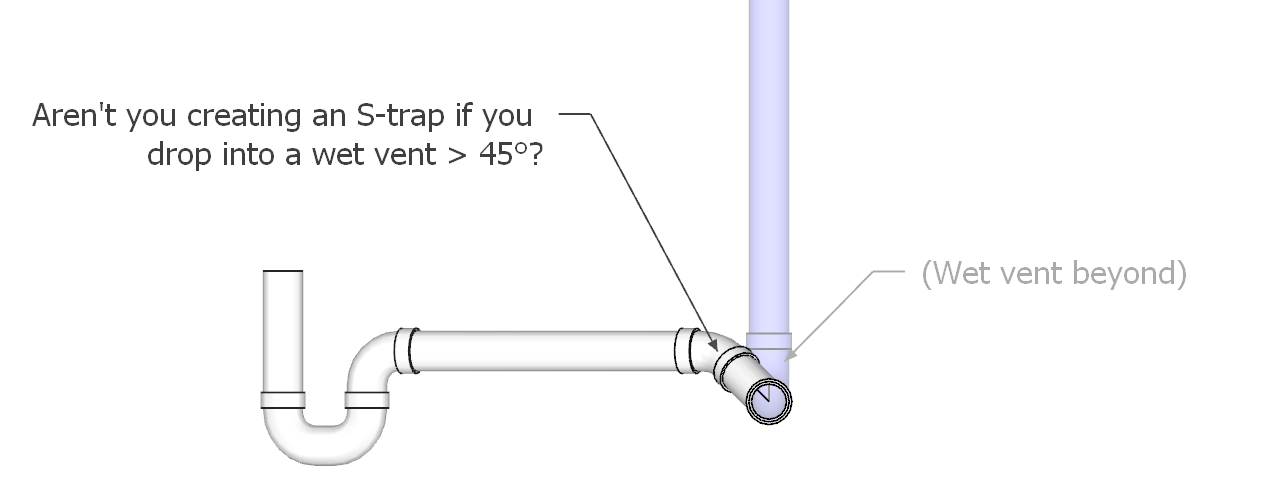
I believe this is done because people misinterpret IRC 3104.3 indicating that vents must have a 45° takeoff from horizontal. But that still doesn't make sense because they are angling the drain, instead of the wet vent...
So what is the right way? Is it acceptable to simply connect to a wet vent along the same plane as the wet vent slope (1/4" per foot)? Don't the wet vent pipe sizing regulations account for waste flowing through the wet vent and make sure the pipe is big enough to allow both waste and airflow? Like this:
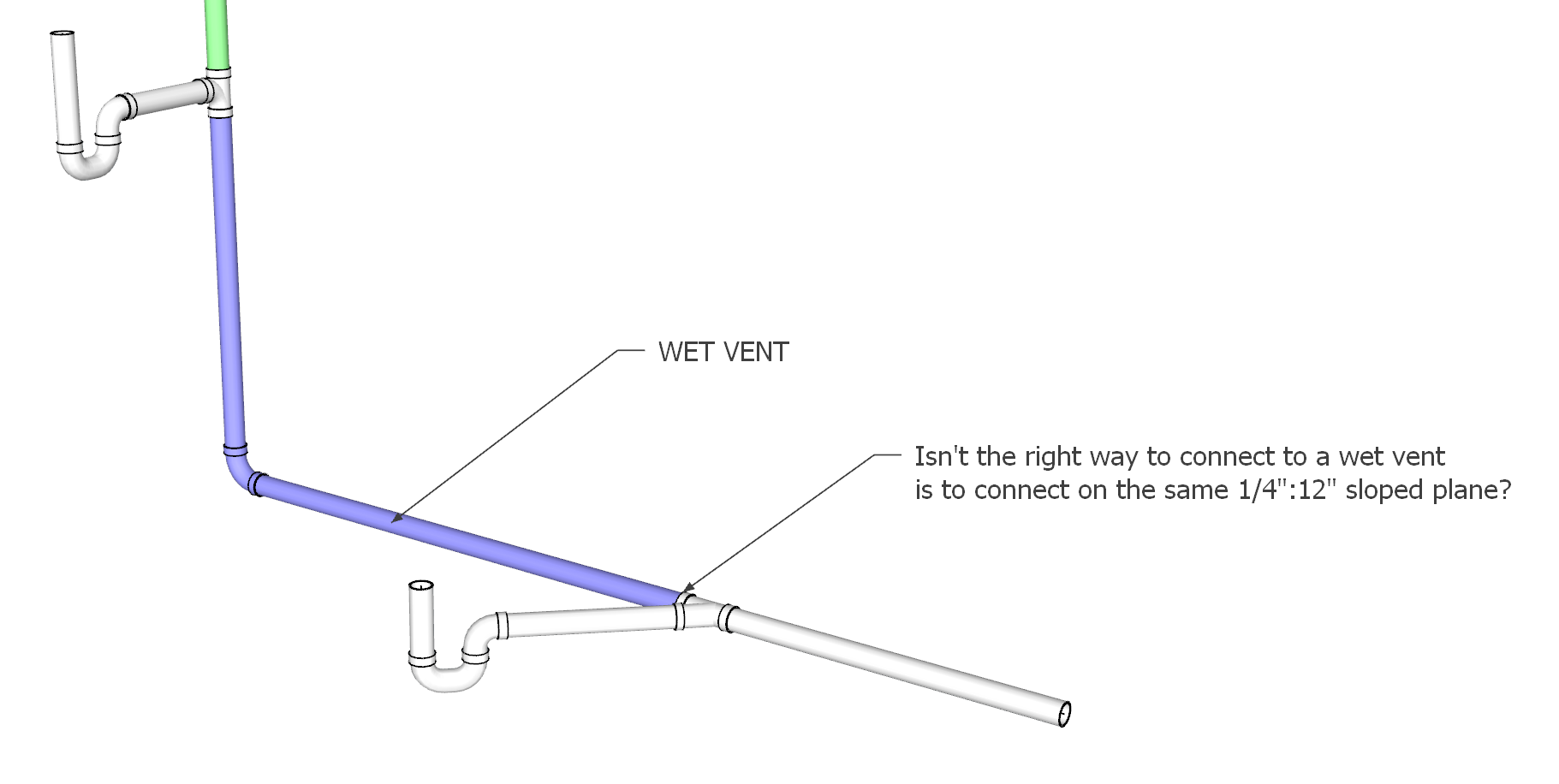
Dry vents need to have a 45° takeoff because waste can clog them if laid flat. But a wet vent will have water flow from the fixtures upstream, so there's no reason to have the 45° takeoff. Am I right on this guys?


How can you downturn any trap arm before it being vented, without creating a siphon condition? In both of these examples, the pipe drops below the weir before being accessible to the vent air. Here is a side view example of the condition shown in the images above.

I believe this is done because people misinterpret IRC 3104.3 indicating that vents must have a 45° takeoff from horizontal. But that still doesn't make sense because they are angling the drain, instead of the wet vent...
So what is the right way? Is it acceptable to simply connect to a wet vent along the same plane as the wet vent slope (1/4" per foot)? Don't the wet vent pipe sizing regulations account for waste flowing through the wet vent and make sure the pipe is big enough to allow both waste and airflow? Like this:

Dry vents need to have a 45° takeoff because waste can clog them if laid flat. But a wet vent will have water flow from the fixtures upstream, so there's no reason to have the 45° takeoff. Am I right on this guys?

